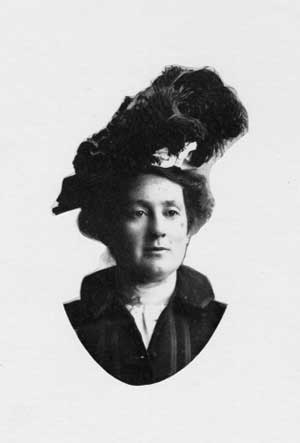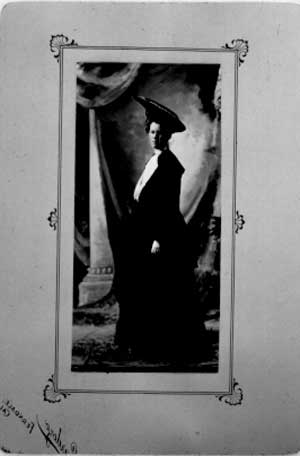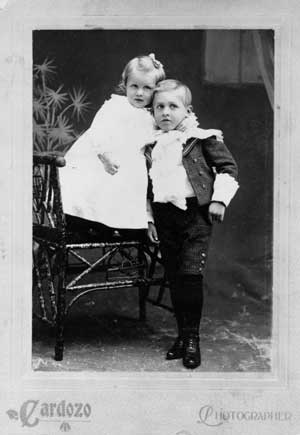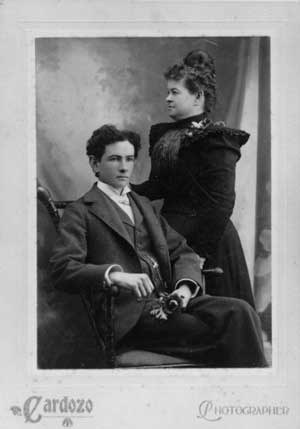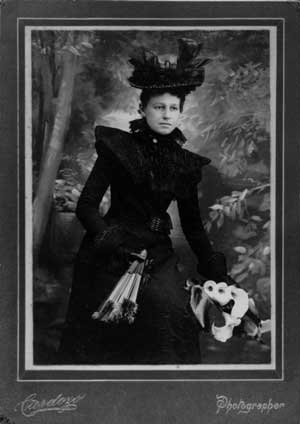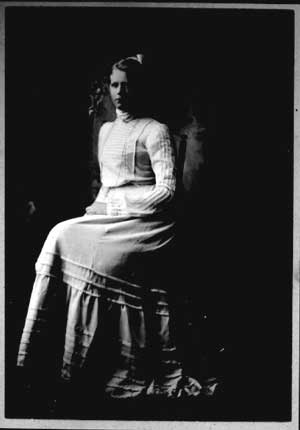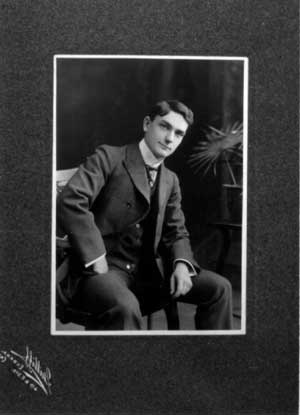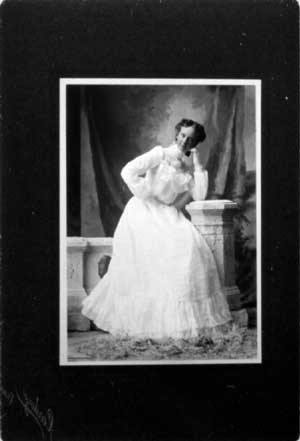by Peter Palmquist
Abigail E. Dean Cardozo worked as a commercial photographer and gallery owner in Ferndale , California , circa 1864-1907. Cardozo was the sixth of nine children born to George Washington Dean (1827-1887) and Sarah Langston Dean (1831-1886). In 1878 on her 14th birthday, she was forced into marriage with Oscar L. Chapman, a man nearly as old as her father whom she hardly knew. They had a number of children but only three survived infancy. She left her husband in 1889, charging him with mental cruelty, then retained custody of their three daughters: Della, Bella, and Stella.
This separation was viewed locally as outrageous, but Cardozo was apparently undaunted and with three daughters to support she quickly found part-time employment -- first as a store clerk and later in a local photography studio. She was extremely proud of her new independence and was described as being a "clever, energetic, charming woman." In 1894, with the divorce finally settled in her favor, she married Levi Nathaniel Cardozo (1864-1951), a local storekeeper, described as "charming and fun," but somewhat of a town loafer.
By April 1897 she entered into a brief business partnership with George Crippen. Their goal was to produce stylistic photographic portraits: "Equal in every respect to the best anywhere." Unfortunately, after a few months the partnership floundered and Cardozo and Crippen became business rivals. In 1898 she purchased the "Post Office" gallery (so-called because it was next-door to Ferndale 's post office) and not only competed favorably with the three other galleries in town (all operated by men), but successfully outlasted them all. Her advertisement in the local newspaper left no doubt as to her determination: "She has not been engaged in photography since her childhood, but she invites a comparison of her work with the work of others, simply this and nothing more." Instead of the standard full-face and stilted poses common to the period, Cardozo developed a special flair for a stylish range of arrangements for her subjects, especially her women customers. In February 1898 she traveled to San Francisco for the latest instruction in hairstyling and was soon able to offer "free hair dressing with each studio setting."
Building on her skills to retouch portrait negatives, she also painted her own gallery backdrops. In 1900 the old post office gallery was razed and Cardozo moved to new quarters at the corner of Washington and Main Streets. In 1903 she started divorce proceedings against her second husband, charging him with failure to provide for reasons of "idleness, profligacy, willful desertion, adultery, and extreme cruelty". Once again the court ruled in her favor.
By 1905 the overall business climate changed for the worst in Ferndale and she leased her studio to Edna M. and Edwin O. Garrett, but still continued to take an active role in it until 1907. About 1910 she married for a third time to Andrew Hayes, an inspector for the city of Oakland. She thereafter gave up her photography and began to concentrate on ceramic painting, operating her own kiln in her garage. By 1925 Cardozo had developed Parkinson's disease which soon affected her painting ability and she returned to Ferndale where she remained until her death in 1937.
